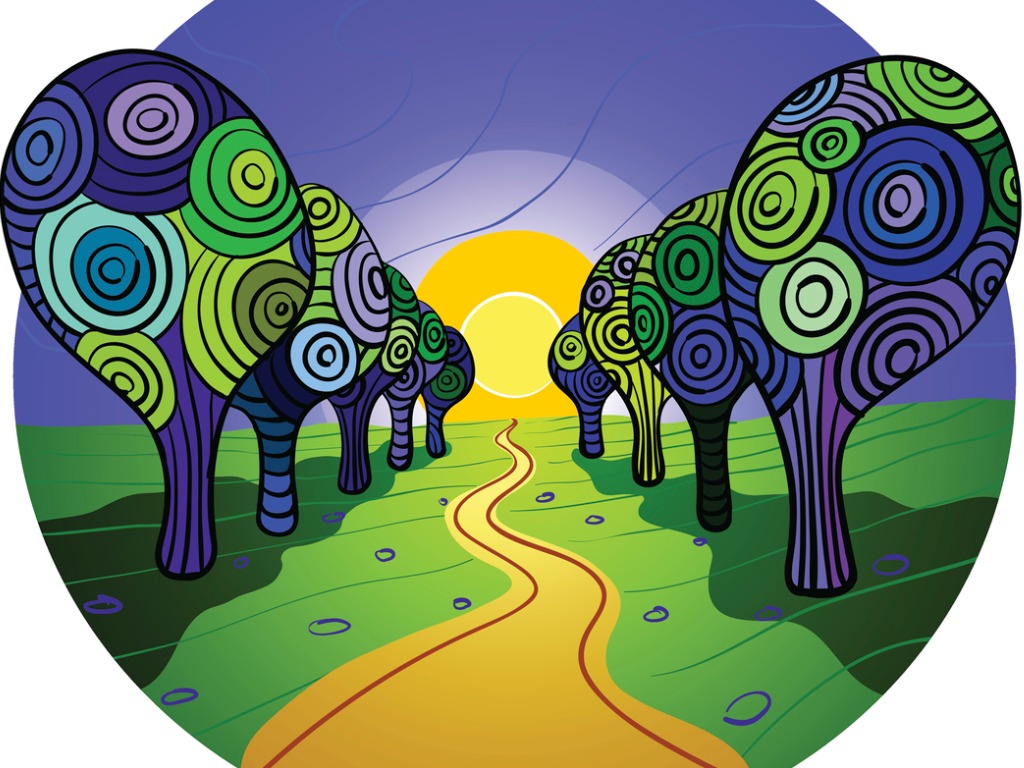
Focus on a theme, a word that represents an area of improvement and growth, says Julia Schmidt
We are all looking for improvements, focusing on creating a better version of ourselves, reaching our goals, and building a better future. To make all these things a reality, we often create resolutions to help us pass the tests and finally get a personal growth certification at the end of the year. However, due to any number of reasons, many of us give up along the way and don’t keep our resolutions. Volatility, uncertainty, complexity, and ambiguity can quickly transform a dream path into a challenging and bumpy experience.
In this article, I want to share with you a different way to choose areas of improvement for personal and professional growth, based on six essential elements: the right people, flexibility, curiosity, experimentation, resilience, and celebration.
The Right People
People are our best human resource in building a resilient future for ourselves. People give us feedback, support, and a safe place to go when needed. We need people! They help us see our strengths and stay committed to our purpose, values, and goals. Collaboration will ensure that the right people can share their strengths, improving both performance and output quality.
Flexibility
Flexibility gives us an entire corridor full of freedom when we do not focus on the “all or nothing” way of measuring goal achievement. When thinking of goals, we tend to focus on one target number: the number of pounds we want to lose, the number of books we should read per year, or the number of training courses we should complete to learn a new skill. But research shows that focusing on one number is wrong. High/low range goals provide two single salient reference points versus just one reference point for the single number goal. This space between the high and the low numbers creates the corridor of freedom: the low range is more attainable, and the high range is challenging.
Curiosity
We are all aware that different ideas and experiences are crucial in today’s world to enable growth. As a skill, curiosity can be improved, developed, and integrated into our daily activities. It is an intrinsic trait, just like our need for food and water. Nurturing our curiosity is like caring about ourselves and fueling learning and discovery. Moreover, being surrounded by curious people will influence the quality of our achievements.
Experimentation
This is part of our ability to abandon comfort zones and enter the zones of improvisation, creativity, and novelties – saying no to what is not serving us any longer and saying yes to opportunities that can bring us new ideas. Framing ideas as experiments helps us stay longer in the growth and learning zones and lets us label what we usually see as “failures” as merely “experiment results.” Experimentation helps us navigate the avoidable uncertainty that is part of our human journey.
Resilience
Resilience is much more than a one-time project in embracing disruption, accepting our setbacks, and learning from them. It is what supports us in our journey of continuous learning, practice, and change processes.
Celebration
In a world of uncertainties, with its complexity and ambiguities, it takes extra patience and resilience to successfully achieve growth, both in our personal lives and at work. However, research shows that even ordinary, incremental progress can increase people’s engagement in the work they do and their happiness during the workday. So, there is so much power in achieving small wins. Why are we not celebrating all the events that often go unnoticed as we make progress and that are critical to the overall performance of teams and organizations?
My Year of Gratitude
Instead of planning a list of New Year’s resolutions, in 2022 I decided to focus on a theme – a word that represented an area of improvement and growth – carefully chosen from a list of relevant themes. It had to be adaptable, creative, holistic, and able to be explored in different areas. My word for the year was gratitude.
Choosing a theme for my personal and professional growth, mapping, and finally identifying the theme took some weeks. The final decision came after a lengthy conversation with a friend who also had gratitude as a central area of improvement. It was encouraging to see the subject inspire others in my network! It enabled a synergy of activities and shared ways to practice gratitude daily. We identified activities to prioritize together. In completing the different activities and keeping a high level of accountability, I promoted my gratitude year among my close network of professionals. I read books about the topic and shared what I learned with others. My conversations about gratitude also inspired me to start my Gratitude Journal and experience the benefits of consistently recognizing how the positive things in my life – like success at work – are often due to forces outside of myself and involve other people’s efforts.
If you need help to know your theme, here is a Personal Growth Theme Finder exercise that can help you identify a theme to boost your coming months of personal and professional growth.
Personal Growth Theme Finder
Take a piece of paper and draw three columns:
- Column A: “Past Successes and Achievements”
- Column B: “Future Aspirations and Desires”
- Column C: “Connecting Words and Themes”
In column A, list the things that worked well in the past 12 months, both personally and professionally. Try to recall periods of deep satisfaction in your past year and consider what triggered them. In column B, write the things that are already part of your life but that you would like to experience or do more of soon. Now, draw some connection lines to connect common themes and explore the paths taking you from one element to another. Explore different colors, images, stories, and your design thinking abilities.
You are getting excited and enthusiastic about what is coming next at this stage. For each connection created in column C, choose words that best describe these connections, paths, and themes.
These words are becoming your list of potential themes. Look for further connections and see how these words could complement each other and eventually become a second-level connection to a first-level word. This step will help you shorten the list and define the main themes.
Consider the activities you need to commit to in the coming months to make these happen. Look for the nouns and verbs you would use to describe those commitments. Focus on the ones that evoke strong feelings in you. At this stage, you may have noticed that some themes are more relevant than others or even more exciting and engaging.
In the table below you can see some examples illustrating how to use the exercise to identify personal growth themes based on past successes and future aspirations:
| Column A: Past Successes and Achievements | Column B: Future Aspirations and Desires | Column C: Connecting Words and Themes |
| Successfully completed a challenging project Developed strong leadership skills Maintained a healthy work-life balance Achieved a promotion at work Completed a marathon Successfully organized a major event Volunteered for a charitable organization | Improve time management and work-life balance Enhance communication skills Increase physical fitness and wellbeing Learn a new language Pursue a new education degree Improve networking skills Travel to new countries Foster stronger personal relationships | Productivity Leadership Health and Wellness Professional Development Creativity and Exploration Event Planning Social Impact |
The Three I’s of Ideal Personal Growth Themes
Look for a theme that is:
Interesting
It must keep you curious and motivated and make others say, hey, it looks interesting; tell me more!
Interconnected
It must be holistic and cover different areas of your life.
Inspiring
It must encourage your growth mindset and generate ideas and inspiration for others and yourself.
In Conclusion
My year of gratitude helped me celebrate the people supporting me more and show thankfulness in a diversified way. My theme for the year was something I could discuss with friends, colleagues, and peers. It resonated with others and helped me stay motivated on the improvement journey. My gratitude journaling habit was a way to celebrate small wins and even recognize them, which I would only have done with these valuable reflection moments. My goals with gratitude were to read three to five books about the topic which would keep my curiosity alive, identify two to three ways to show gratitude, and strengthen two to four relationships within my inner circle of friends and teammates. Also, I wanted to express more gratitude to colleagues and have two to four gratitude stories from my workplace to be proud of.
Good luck in discovering the magic word that will help you boost your lifelong learning and path to personal and professional growth!













